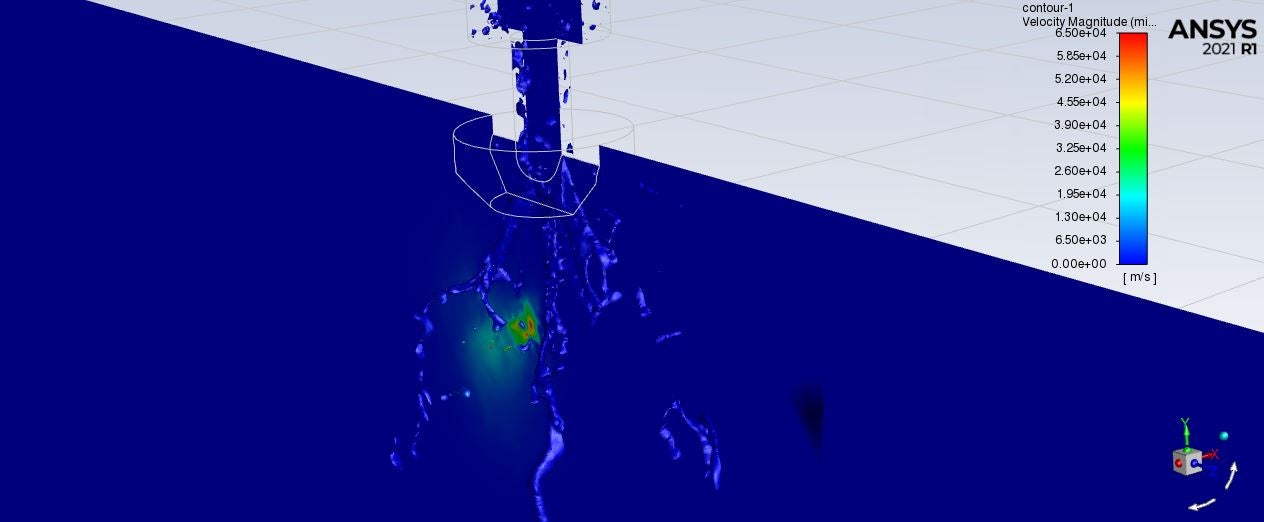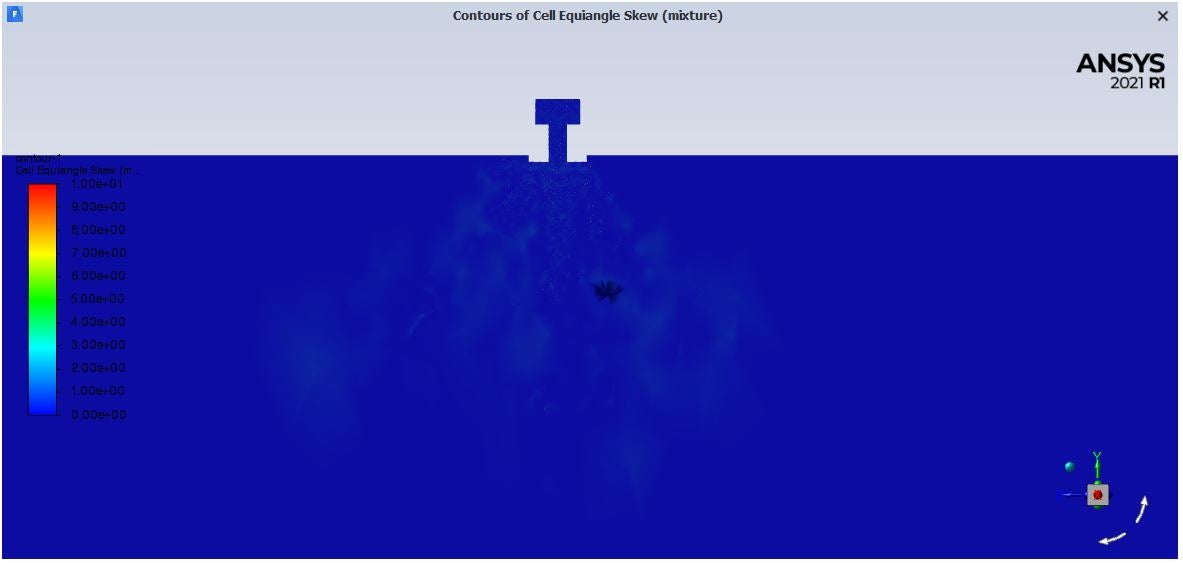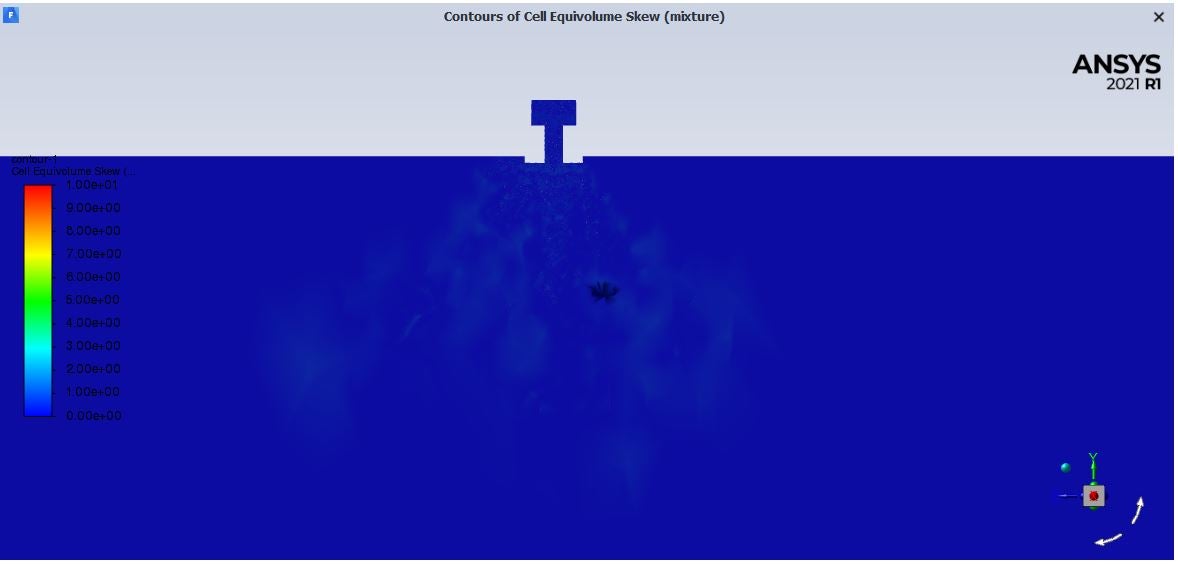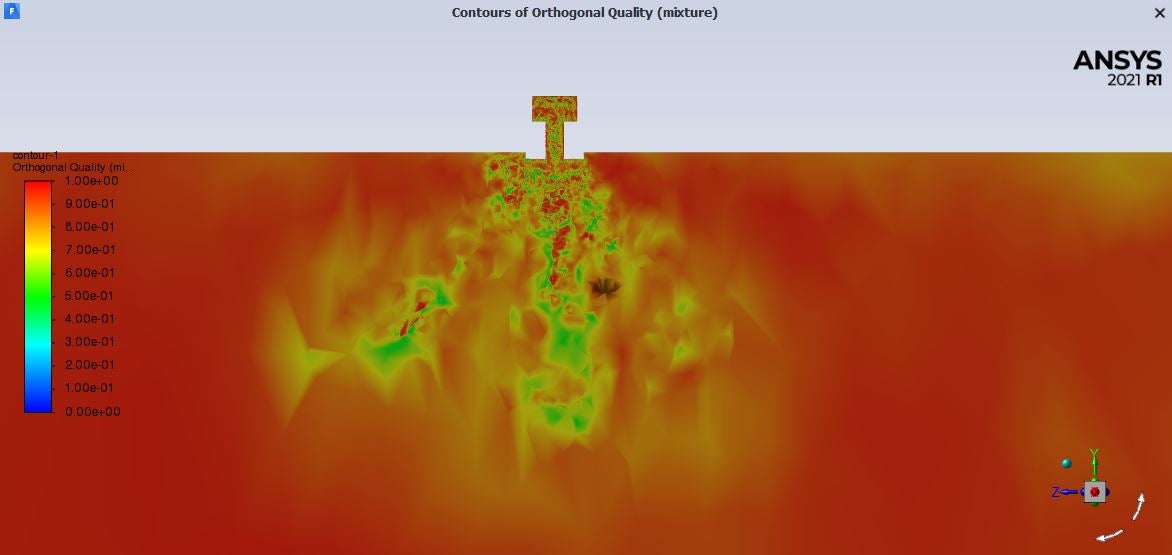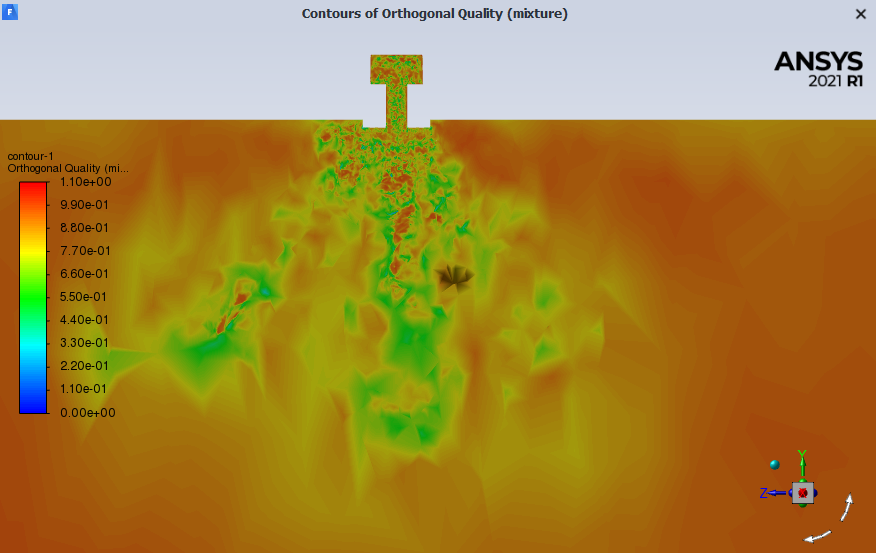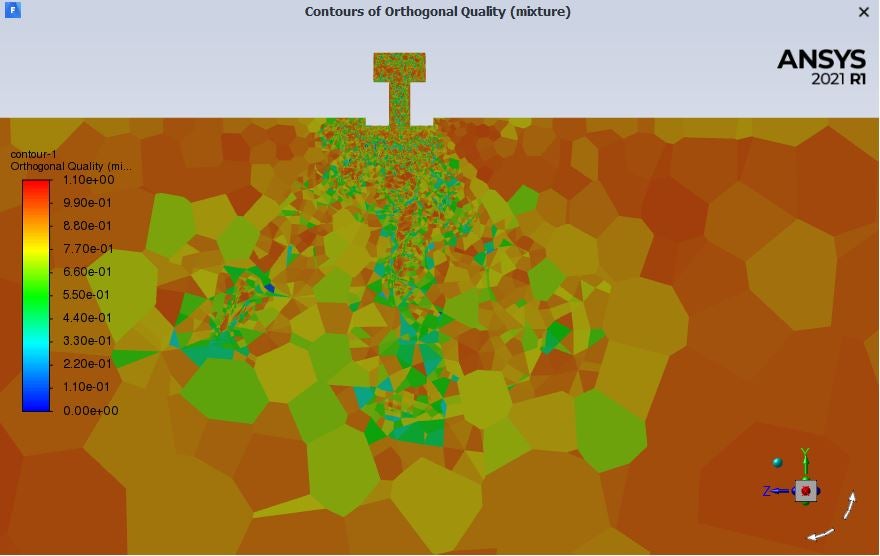TAGGED: ansys-fluent, dpm, fluent, fluids, multiphase
-
-
May 18, 2021 at 1:52 pm
smarx2
SubscriberI am using R2021 VOF-to-DPM for simulating a nozzle, and am having my simulation error out due to high courant number. I tried smaller time steps, coarser mesh, etc. but found that the problem continues. I decided to plot the courant number and it showed that my courant number was exceeding 1000. So I then plotted my velocity magnitude to see what was happening. In a configuration where I wouldn't expect more than 100 m/s velocity at any given point, the simulation is showing up to 65,000 m/s (image attached is the plane parallel to the vee cut of the nozzle and the iso surface of multiphase interface). Any ideas on what I'm missing or what's happening?
May 18, 2021 at 3:33 pmRob
Forum ModeratorThat suggests the model was diverging before that time step. If you go back some steps are you seeing any convergence issues? Also check the mesh in that region, look for cell quality, cell size change and whether you're resolving the flow.
May 18, 2021 at 3:41 pmsmarx2
SubscriberRob I am using the Adaptation Controls similar to the VOF-to-DPM Crosswind tutorial, with a minimum cell size of 1e-13 and refinement level of 5. My initial cell size in that region is quite large though, so maybe that has something to do with it? How do I check cell quality for a specific region? (I am a self taught Fluent user, so don't know all the ins and outs). Thanks.
May 18, 2021 at 3:57 pmRob
Forum ModeratorIf it's a hex mesh quality should be fine as the adaption should turn it into smaller hex cells. If you look in the reports or contours there are skew metrics under mesh: check what the ranges are.
May 19, 2021 at 2:57 pmMay 19, 2021 at 3:17 pmRob
Forum ModeratorPossibly, turn off node values and alter the range to see what is going on in that area.
May 19, 2021 at 3:29 pmMay 20, 2021 at 7:41 amaitor.amatriain
SubscriberCould you please post some mesh pictures? For example, the initial mesh, the mesh just before Co<1 and the mesh just after Co>1. As Rob wrote, it is interesting to detect that transition to see what is happening. Just some data with Co>>1 does not help to detect the problem.
May 21, 2021 at 2:44 pmsmarx2
SubscriberAitor and Rob It appears to have to do with my adaptive grid criteria. I attempted to re-mesh the domain and re-run the model. The Courant number again spiked, and did so as the interface reached the larger cells.
For the model, my minimum droplet size is 50 microns, so I calculated that to have two cells across with 8 levels of refinement, my maximum cell size is 6.4mm (.05mm/2=.025mm... .025mm*2^8=6.4mm... hopefully I did that correctly).
Could my issue be a misunderstanding of the adaptive grid criteria?
Here's an image of the mesh during adaptation (Courant#~1):
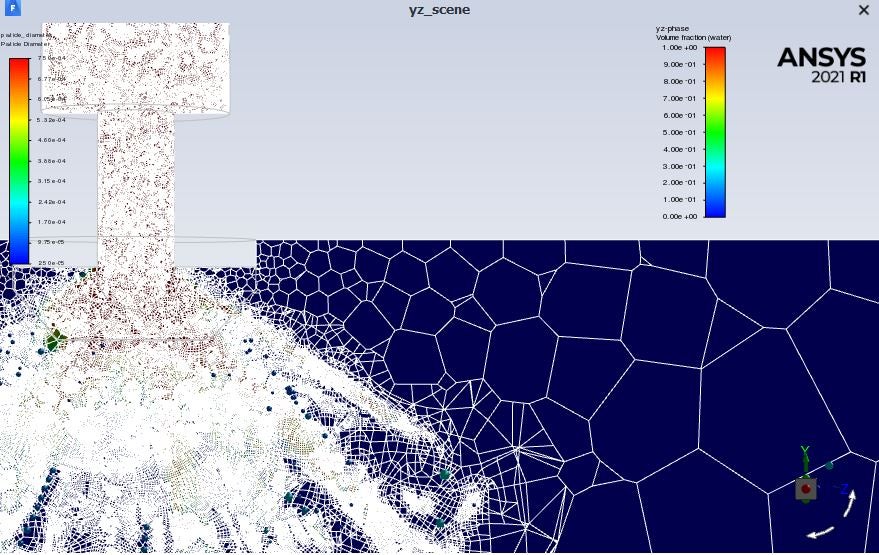 Here's a zoomed in image of the interface mesh after the Courant number went over 250:
Here's a zoomed in image of the interface mesh after the Courant number went over 250:
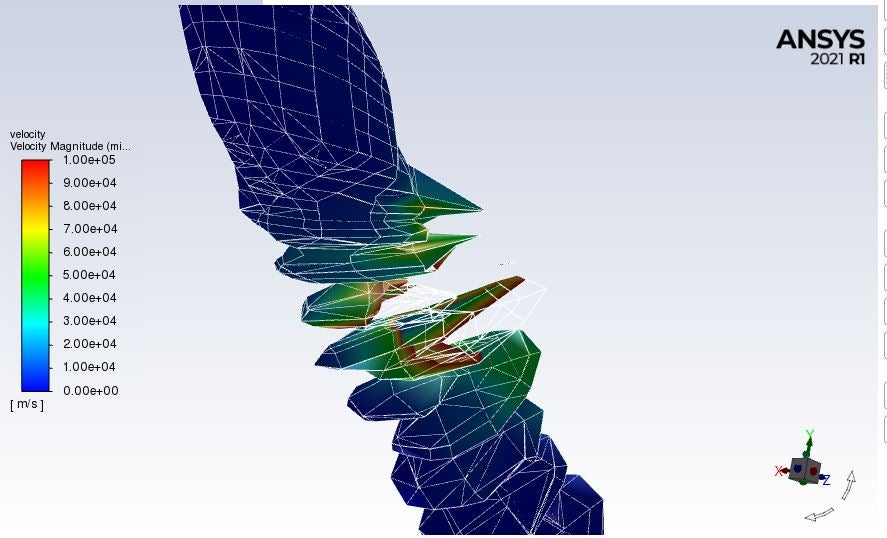
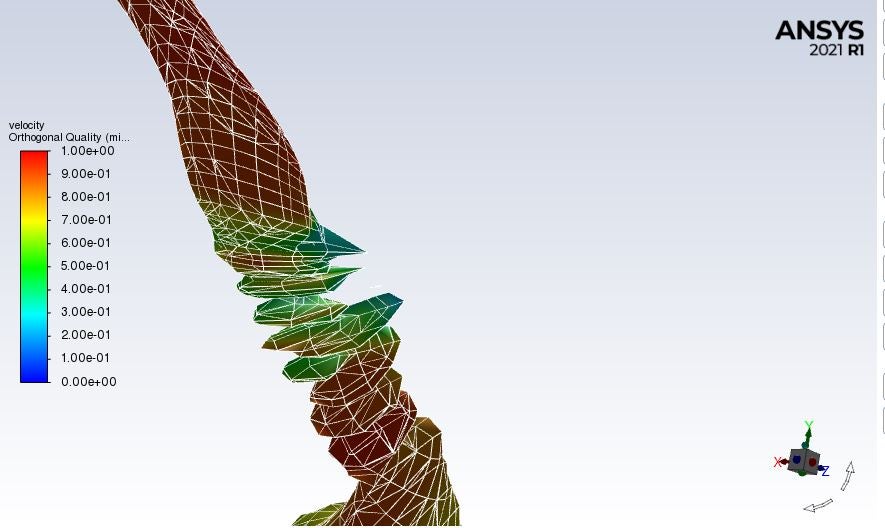
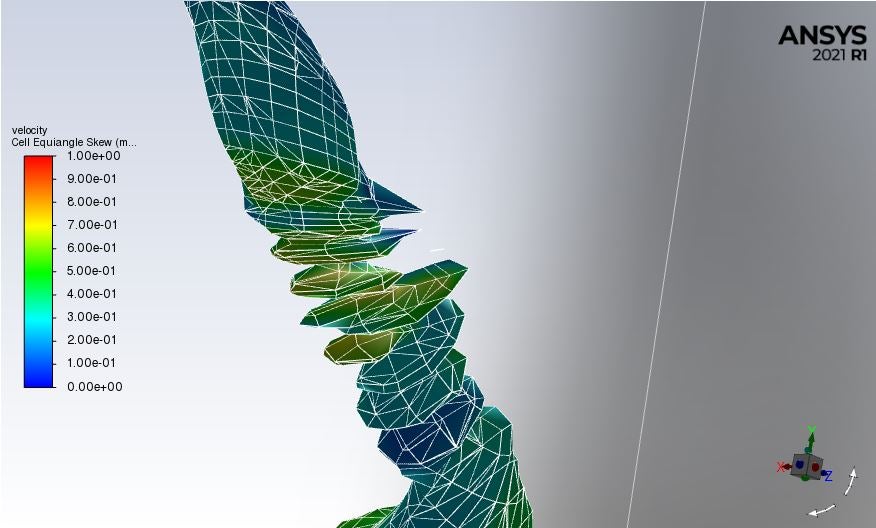 Here's images of the interface when Courant#~1:
Here's images of the interface when Courant#~1:


I'm happy to post more pictures. Not sure what's helpful... thank you for the quick responses and aid in this issue.
May 21, 2021 at 3:18 pmRob
Forum ModeratorYes, that's the refinement+coarsening to many levels messing with the Poly mesh: it's because it's refined a lot then coarsened repeatedly so the mesh is no longer what you created. We've seen it before but that's about the worst I've seen, even in testing. Easiest fix is to use poly+hexcore or reduce the max refinement level: the former works as the hex mesh doesn't distort.
May 21, 2021 at 6:43 pmsmarx2
SubscriberRob I attempted to use the Poly-Hexcore meshing method. I reduced my max cell size to 1.6mm so that I could use 6 levels of refinement. After everything was set up and initialized, my volume fraction plot appears to have gaps in a couple cells (below). When I tried to run calculations, I received a floating point exception (which I assume is due to the missing cells). Do I need to try to re-mesh the domain? Also, please feel free to let me know if I misunderstood any of your recommendations.
Thanks.
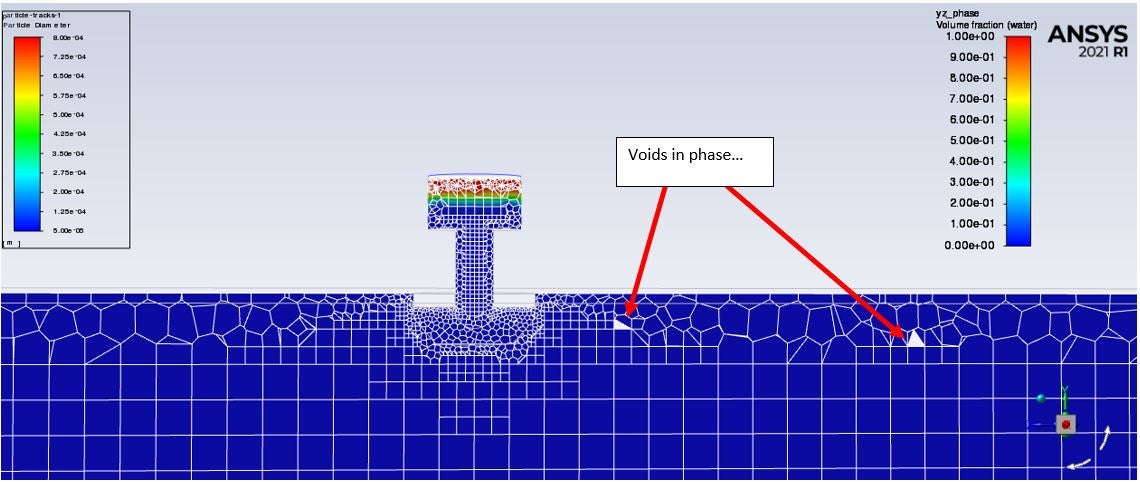
May 24, 2021 at 7:22 amaitor.amatriain
SubscriberI created a Service Request some time ago related to the white cells. I was told that this bug was also previously reported, and a provisional solution was to use CFD post. The problem is just visual, and does not depend on cell quality. The cells are there; you can try to simulate a simple single-phase flow and you will see that flow variables are smooth in that area.
In regards to your specific problem, this is related to mesh refinement and I have not enough experience to give you a solid advice. However, I would like to mention that I have faced a similar problem in the past related to Poly-Hexcore mesh. In detail, during some transient LES (or hybrid RANS/LES) simulations, there was a (poly) cell at the outlet (or a couple of cells) where Co increased gradually until tending to infinite, and this caused divergence. The cells in the neighbourhood had Co<<1, so this was not supposed to be a problematic area.
I checked everything (mesh quality, domain size, maximum Co number and so on), and after some discussion with ANSYS members, the solution was to patch Co number in that cell, and set v = 0 there. In principle, this worked, even though after some iterations the problem appeared with temperature. I did not made more progress because I changed the approach to my specific problem.
May 24, 2021 at 7:23 amRob
Forum ModeratorThe gaps are just a surface display glitch, the facet isn't in the surface so you see white "holes". The solution is fine, and it's been an occasional issue since iso surfaces and tet mesh first came out.
I do suggest that you patch in the whole nozzle with liquid, and watch this https://www.youtube.com/watch?v=S0MUu2svgQ8 We do have a best practice but it's not in the public area so I can't share the document.
Viewing 12 reply threads- The topic ‘Multiphase Velocity Spike Not Realistic’ is closed to new replies.
Ansys Innovation SpaceTrending discussions- air flow in and out of computer case
- Varying Bond model parameters to mimic soil particle cohesion/stiction
- Eroded Mass due to Erosion of Soil Particles by Fluids
- Centrifugal Fan Analysis for Determination of Characteristic Curve
- Guidance needed for Conjugate Heat Transfer Analysis for a 3s3p Li-ion Battery
- I am doing a corona simulation. But particles are not spreading.
- Issue to compile a UDF in ANSYS Fluent
- JACOBI Convergence Issue in ANSYS AQWA
- affinity not set
- Resuming SAG Mill Simulation with New Particle Batch in Rocky
Top Contributors-
3912
-
1414
-
1256
-
1118
-
1015
Top Rated Tags© 2025 Copyright ANSYS, Inc. All rights reserved.
Ansys does not support the usage of unauthorized Ansys software. Please visit www.ansys.com to obtain an official distribution.
-

